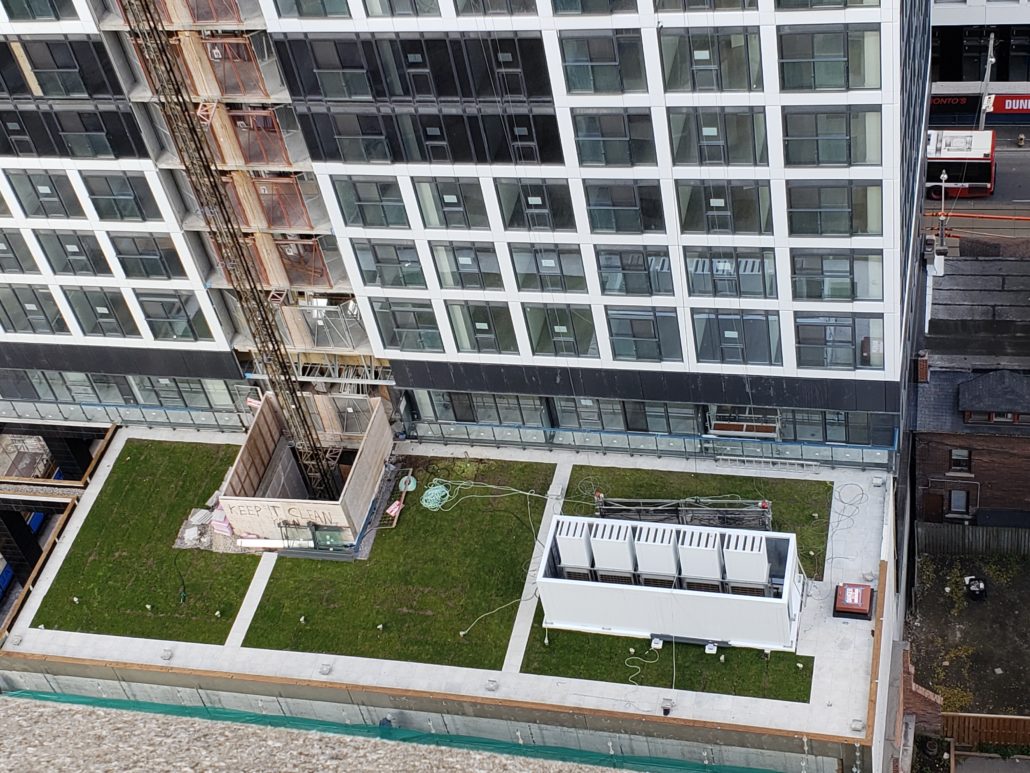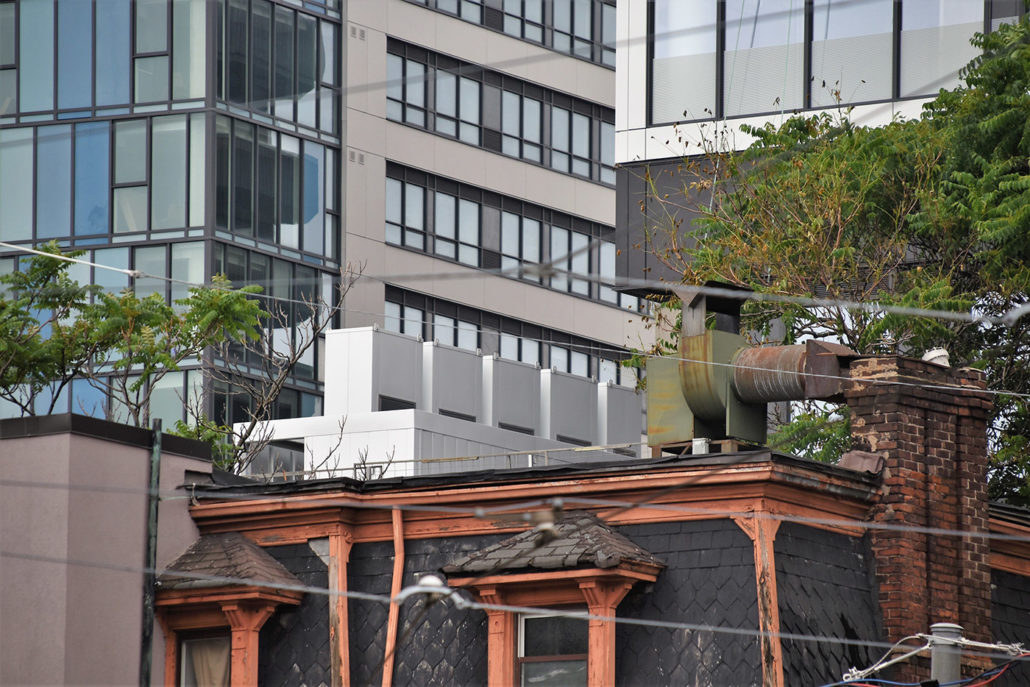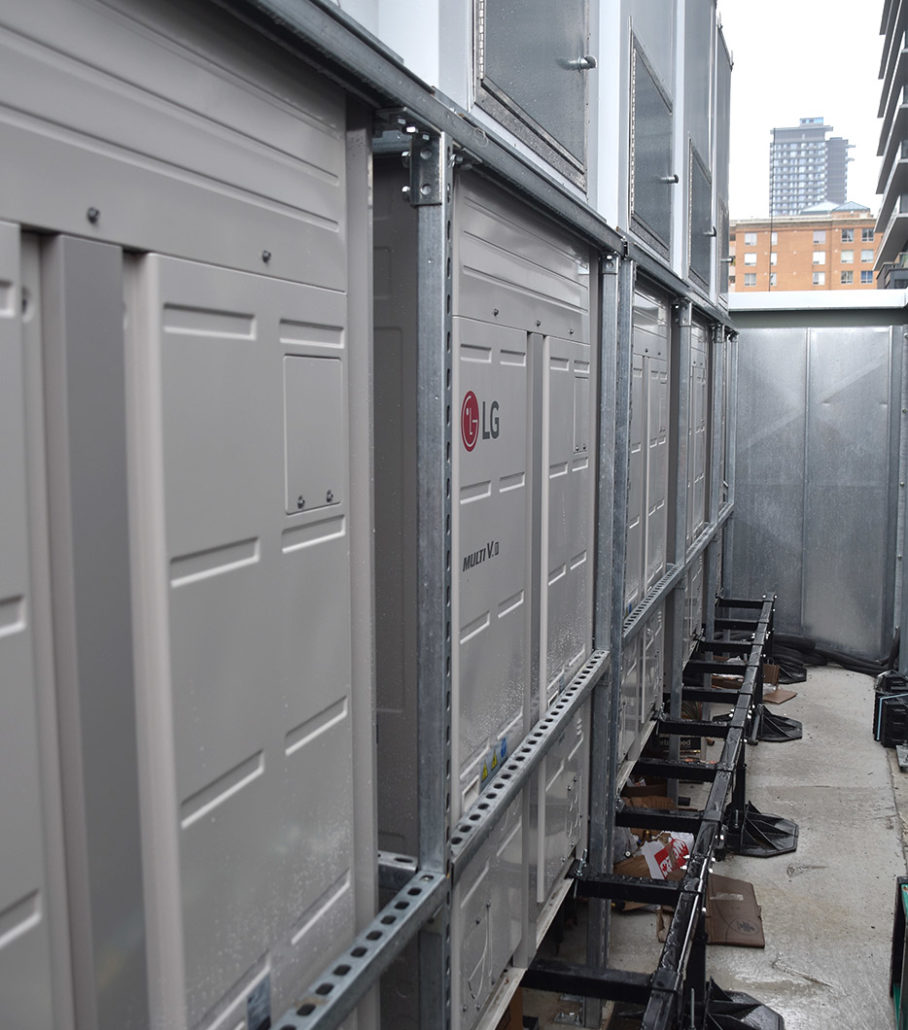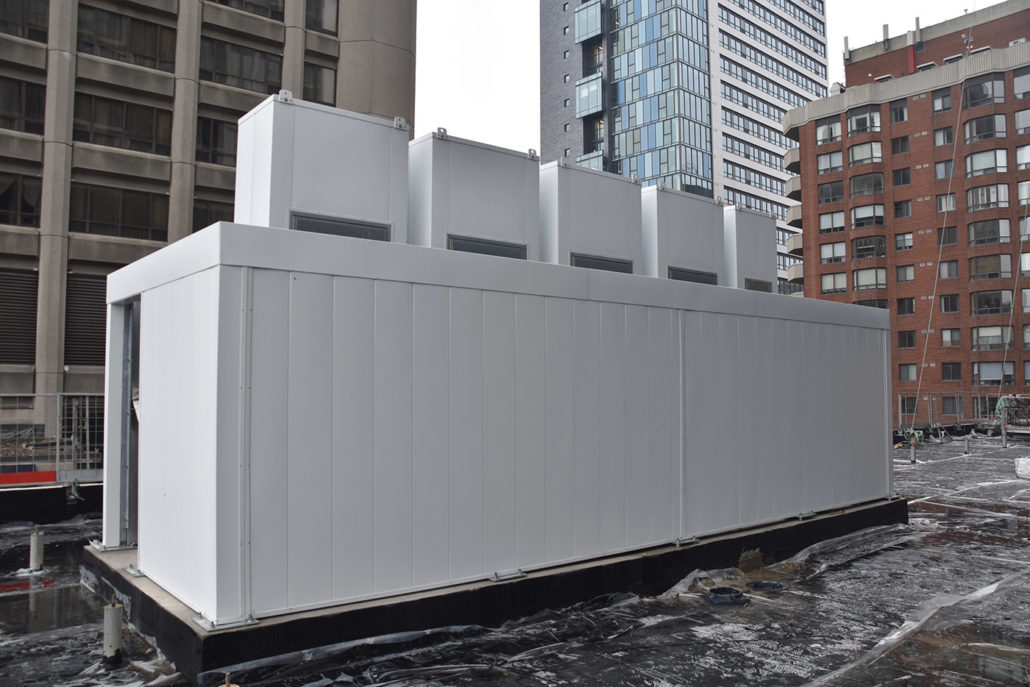As the densification of urban areas continues and North American cities grow skyward with the construction of ever-taller condominium towers, noise control is becoming an increasing concern. Sound emissions are especially problematic in settings where large towers abut low-rise residential units—which are often impacted by their soaring neighbours in various ways, including unwanted mechanical sound emissions. VRF noise is a common problem.
Such was the case at a newly-built condominium tower in downtown Toronto. The building is wedged between existing residences, including a low-rise century home. In this instance, the building’s rooftop VRF unit was positioned on a two-story roof terrace directly adjacent to the home’s backyard, while also sitting within ear shot of some of the building’s own units. In addition, the VRF units were located on a lower penthouse roof creating potential impacts on the new suite owners of this premium condo building. The noise emissions from the VRF units would soon become problematic—and the developer was faced with the requirement to mitigate the VRF sound emissions as part of their building permit requirements.

The Parklane team was called on to determine how the building could be brought into compliance with provincial and municipal ordinances for exterior noise emissions—while also ensuring that the new suite owners or surrounding neighbours wouldn’t be disturbed by any subsequent efforts to mitigate the noise sources. We would work with the acoustic consultant who assessed the extent of the problem, as well as the building owner and their construction management firm to achieve an effective solution. But not before we were tasked with overcoming several project hurdles.
The challenge
First, the site access strategy would also need to ensure that the dozens of third-party trades working to complete the high-rise would be able to maintain full access at all times. Our team would need to coordinate with those trades to minimize on-site scheduling overlap as much as possible.

To further complicate the situation, the VRF units’ downward line-of-site precluded the use of an acoustic screening system as a standalone attenuation solution. Significant noise was emanating from the unit’s top-mounted cooling fans, and because these systems operate with very little external static pressure allowance, a low-static, at-source solution was also required.
At the same time, the developer was concerned that the aesthetics of his brand new tower would be compromised by an unsightly roof screen. We assured him that the solution would not only blend in with the building’s architectural façade, but that our customized cladding solutions would nicely complement the overall design aesthetic.
The solution
With a strategy to manage logistical limitations and the engineered solution in hand, our team set out to work.
First, we installed a series of modular plenum silencers to mitigate discharge air noise from the VRF units. The design required close collaboration with the equipment OEM to ensure the equipment functioned to the manufacturers’ specifications and remained serviceable once our sound attenuation components were installed.

To further limit sound emanating from the system intake, we erected a customizable PMA AcoustaMod rooftop barrier around the perimeter of the VRF unit—a critical addition given the positioning of the component directly adjacent to the building’s rooftop terrace. Architectural materials for the roof screen system and silencer casing were selected to match the condominium’s façade, while our factory-assembled, modular process allowed us to mitigate the need for an on-site crane during the installation process.
Modularity is a key aspect of our noise control product and service delivery process. By designing, fabricating and assembling components off-site, we can significantly reduce installation timelines and general time on-site. We also conduct quality assurance checks prior to materials leaving our manufacturing facility to mitigate product deficiency risks.
The result
Our team was able to install the rooftop barrier and silencers in two days of complete site time, while the building trades were able to complete their work on the building. Most importantly, the sound emission issue was attenuated without any documented complaints for the new suite owners.

Our flexible installation approach and modular assembly process not only limited installation time, but it also significantly lowered project costs. Most importantly, the condominium’s occupancy deadlines were met, mitigating the risk of occupancy delay consequences for the property developer. The project is a good example of our agile approach to engineering, our focus on developing customized noise control solutions and ongoing collaboration with project stakeholders to deliver expected attenuation results.
The Parklane Team
Contact us now to discuss your mechanical noise challenges
